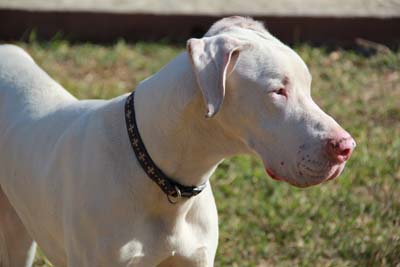
It can be easy for a deaf dog to be stressed out and develop anxiety problems if he is constantly startled, or scolded for doing the wrong thing when he can’t hear what he’s being asked to do. Fortunately, living with a deaf dog is very much like living with a hearing dog with a few important adjustments.
How do dogs become deaf?
Dogs may be deaf for a lot of the same reasons as humans:
- They can lose their hearing as they age.
- A traumatic injury can cause deafness.
- They can be born deaf – certain breeds, such as Australian Shepherds, Dalmatians, Great Danes, and Welsh Corgis, are prone to congenital deafness.
How do I know if my dog is deaf?
Puppies who are deaf may seem to learn slowly, don’t know their names, and don’t respond to verbal commands; older dogs who are losing their hearing may not greet you at the door if they are sleeping. If you think your dog may be deaf or hard of hearing, try making sounds when he can’t see you. For example, rattle keys, clap your hands, squeak a toy, or ring a bell – if your dog does not respond, there is a good chance that he didn’t hear the sound.
What do I need to know about life with a deaf dog?
The most important thing to remember is that he can’t hear. That may sound obvious, but it is easy to forget what that means:
- Do not let him off leash near traffic as he can’t hear cars coming or horns honking.
- Remember that you can’t communicate using sound. A “No!” from the couch won’t work to correct your dog if his head is buried in the garbage can – you will have to get his attention in other ways.
- Don’t sneak up on him if you can help it – if he can’t feel the floor vibrate when you come near, try flicking the lights or walking into his field of vision before touching him, so you don’t cause anxiety or even startle him into biting.
- If you need to wake him, try stamping your foot near him. You can also condition him to wake to a gentle touch or at the smell of your hand in front of his nose – if you do this carefully. Teach him that waking that way is pleasant using treats so that he doesn’t develop anxiety about waking – and you don’t get bitten.
- Teach these same things to children.
How do I train a deaf dog?
Fortunately, training a deaf dog isn’t much more difficult than training a dog who can hear – the only difference is that you have to catch his attention in different ways. But the principles are the same:
- Use positive reinforcement methods, rewarding desired behaviors with treats, toys, and affection.
- You can’t use a clicker, but you can still use clicker training techniques if you replace the click with a sign, such as a thumbs-up.
- In place of verbal commands, use hand signals. You can use any signals you want, just be consistent. Any dog can learn hand signals – and many do. For example, most dogs who compete in advanced obedience and other dog sports learn hand signals so their trainers don’t have to shout across long distances.
- Older dogs can learn new tricks – even if they have lost their hearing over time.
- Be patient – every dog is different and they all learn at their own pace – and the same is true for deaf dogs.
So you can see, life with a deaf dog takes a few adjustments, but is every bit as rewarding as with any other dog. For some great stories and resources, check out Deaf Dogs Rock.